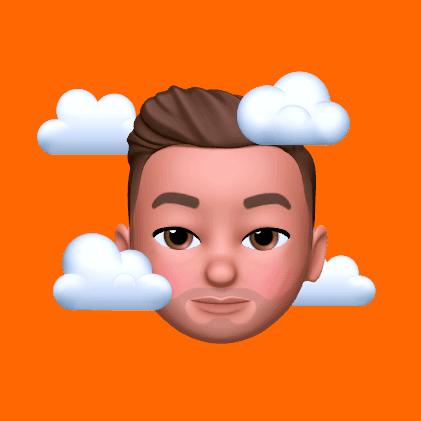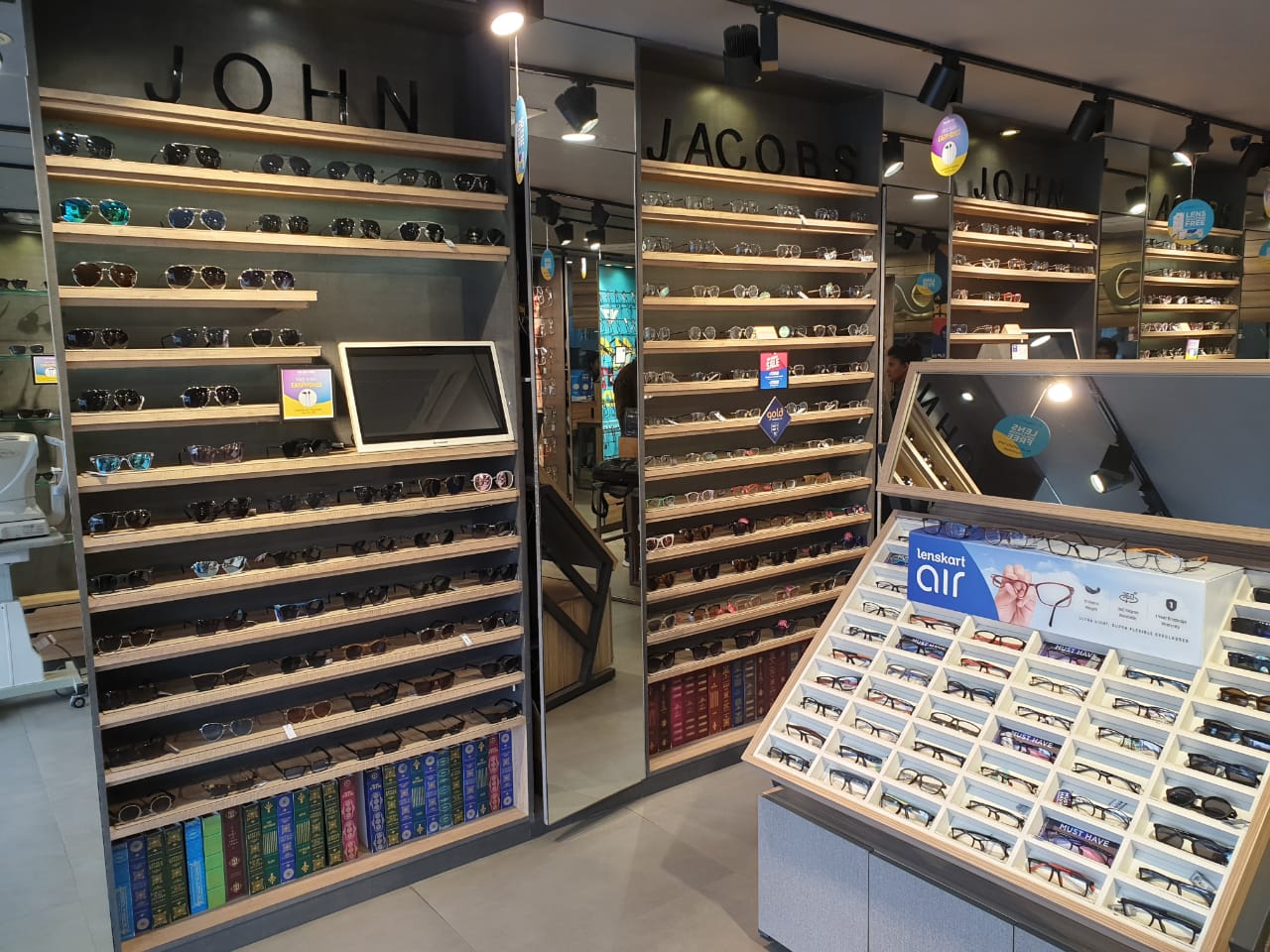
The Premise:
Lenskart is an omni-channel company. Which mean it has an online as well as retail presence. At that time it had around 400+ stores in India. Retail generated somewhere around 70% of the revenue.
The Buy one get one (BOGO) Offer in stores had a pretty good conversion rate somewhere around 80%. So most shoppers bought an extra pair of eyeglasses. The extra pair is often a cheaper eyeglass people buy as a backup pair, in case someone loses or break theirs.
But somehow the online conversion of BOGO was quite less in comparison to retail stores. We went to stores to find out how things were working.
The Retail Experience:
In stores experience is very organic and visceral. People walk in with little intent, they walk around get the feel of the space. Pick few items try them and look for feedback or some validation. Since Lenskart is a budget brand price was not an immediate concern, most shoppers were interested in the look and feel of the product, whether the design they were trying was in trend. So shoppers are trying to get the feel of things.
So if we break down the retail experience it looked something like this.
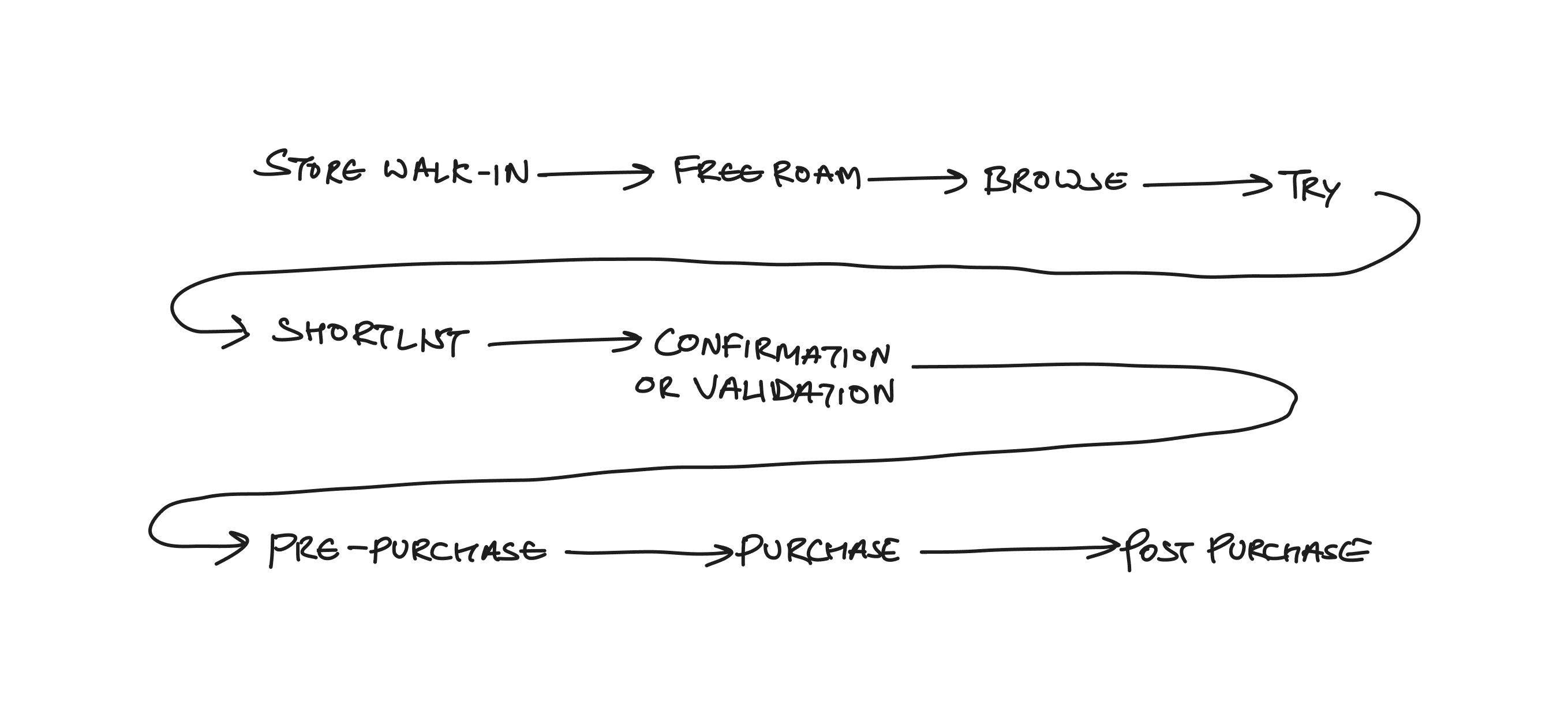
We found that salesperson were very tactical in introducing the BOGO offer. They mostly did it in the Pre-Purchase stage, when the shopper has shown some intent of purchase. We also found that up till Shortlisting the experience is more qualitative and visceral. And after that the process is more quantitative and analytical.
So we can see there are two overarching stages:
The first is from walk-in to shortlisting.
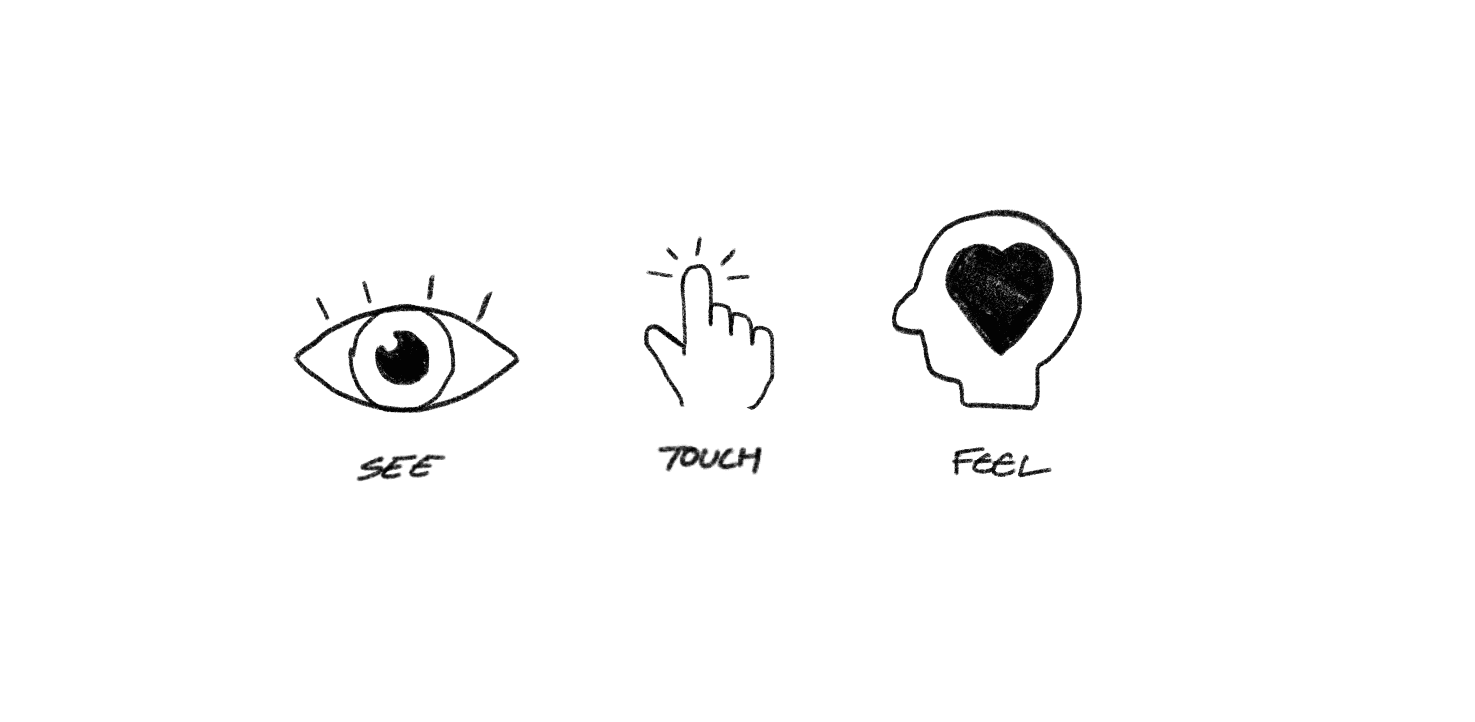

The questions the shoppers are asking are:
"Will this look good on me"
"Is this the right size?"
"Whats the latest trend these days?"
The second stage is from confirmation to post-purchase.

When the shopper get some validation from checking out in mirror or feedback from other folks they start asking questions like:
"What will this cost?"
"Is there any offer on this?"
This is when they are weighing things more quantitatively and thats when salesperson most often introduce the BOGO offer.
Existing Online Experience:
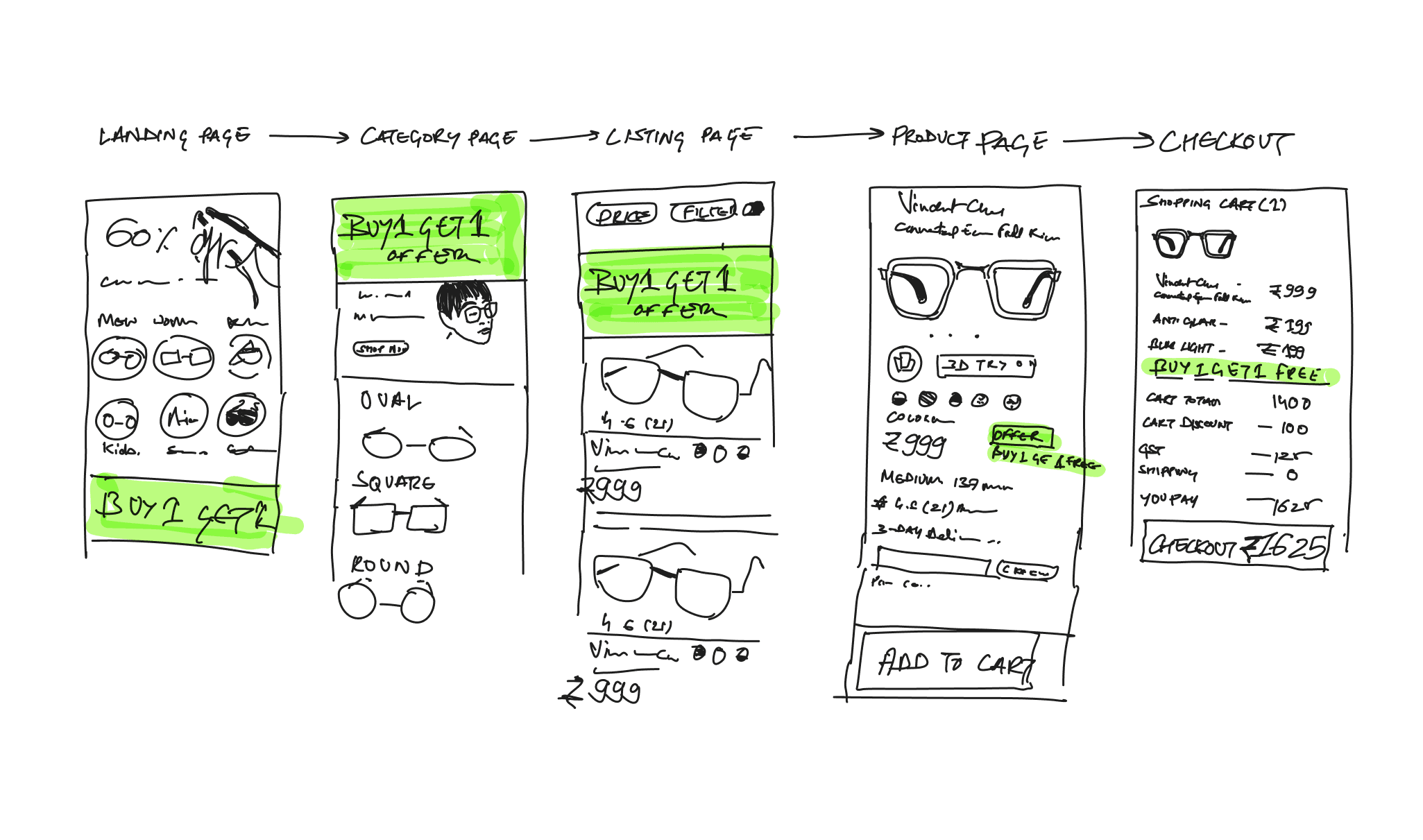
The online experience was very close to a typical e-commerce experience. We bombarded our BOGO (Buy1 Get1 Free) offer pretty much everywhere. Right from landing page to checkout page.
The Solution:
In our retail store research we found that most shoppers were preoccupied with the visceral part of buying initially, with this learning, we didn't interfere with the existing online buying process. We also found that the sales person mostly talked about the offer later in the journey i.e. after the the shopper showed high intent. Thus we picked the "Cart page" to double down and re-iterate our offer proposition.
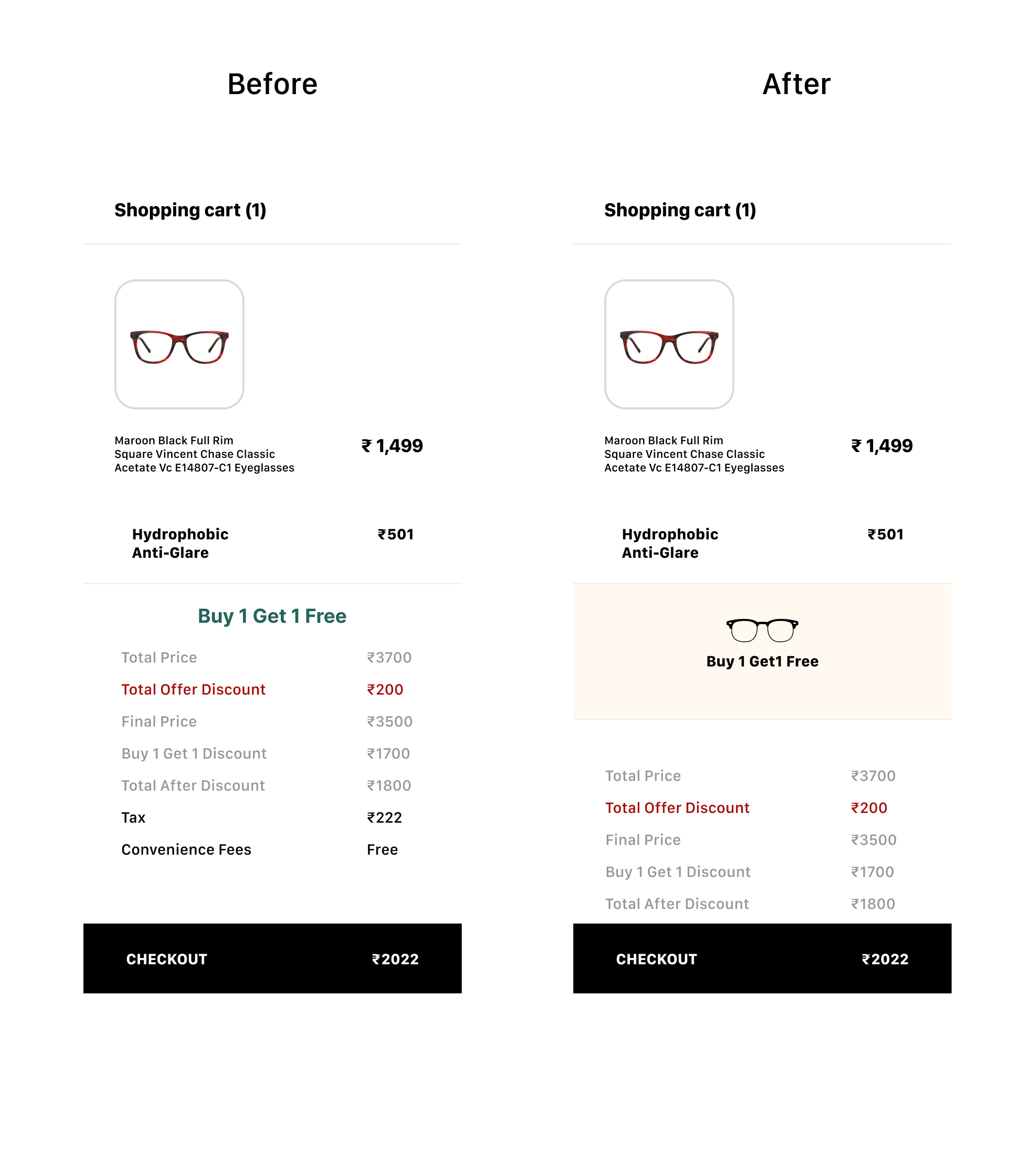
So what we did was we added a button to add the second pair. The results were better but not great.
Fine-tuning:
While the offer was "But 1 Get1 Free" thats was not what the button was doing. The button was actually helped users in adding the second pair. So we changed the buttons label and tested few variants.

So switching CTA label text from "Buy 1 Get 1 Free" to "Add Second pair for Free" made the proposition much clearer.
Results:
Uptick in BOGO conversion from 28% to more than 51%.
Why it worked:

We think the new design triggered the offer at the right time and at the right place: the cart. Also re-framing the offer name from “Buy 1 Get 1” to “adding a second pair for free” worked in our favour by looking less like an offer but more like a feature. It was a relatively small change that led to growth in our case.
Shared credit with team members Ramneek Khurana, Pravir Shanker.
